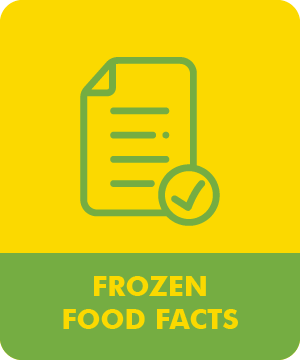
Frozen meals and fast food have both grown in popularity as quick dinner choices. However, it’s critical to grasp the fundamental distinctions between these two options, particularly in terms of nutritional content, components, and overall influence on your health. In this article, we will look at the differences between frozen food and fast food, putting light on the ramifications of each option and assisting you in making educated selections for your health.
1. Nutritional Value:

In terms of nutritional content, frozen food, and fast food differ greatly. Frozen food items, such as those sold by Goeld Frozen Foods, are frequently created with carefully selected components that retain their nutritional value after freezing. These items might be an easy way to include healthy grains, veggies, and critical nutrients in your diet.
Fast food, on the other hand, is higher in harmful fats, added sugars, and salt. It frequently lacks the critical nutrients required for a well-balanced diet. Fast food selections are often processed and rich in calories, which can lead to overconsumption and weight gain if not taken in moderation.
2. Ingredients and Quality:

Frozen food products are created using high-quality components such as fresh vegetables, spices, and herbs. Goeld Frozen Foods takes pride in procuring veggies directly from farmers and placing a premium on ingredient quality. Frozen foods are meticulously prepared and frozen to retain the flavor, texture, and nutritional content of the components.
Fast food, on the other hand, frequently relies on processed foods such as refined grains, hydrogenated oils, and additives. When ingested in excess, these chemicals can lead to health problems such as obesity, heart disease, and diabetes. Fast food is usually designed for convenience, with the speed of preparation taking precedence over the quality and integrity of the ingredients utilized.
3. Preparation Methods and Control:

Frozen foods provide the benefit of allowing you to regulate the cooking procedure. You have the freedom to cook and prepare the meals to your liking, assuring maximum flavor and texture. This allows you to personalize your meals while still reaping the nutritious benefits of the components.
Fast food, on the other hand, is typically made in huge quantities and served rapidly. Deep frying is frequently employed in fast food preparation, which can increase the calorie and fat content of the product. Furthermore, quick meal alternatives typically provide little personalization, with predefined menus that may not meet certain dietary needs or tastes.
4. Portion Control and Caloric Intake:

Portion management is an essential part of eating a balanced diet. Frozen foods are frequently sold in pre-portioned amounts, allowing for a more systematic approach to portion management. This helps to reduce overeating and improves calorie control.
Fast food, on the other hand, is well-known for its bigger serving sizes and increased calorie content. Fast food’s ease and cost can lead to overconsumption, resulting in an intake of more calories than is recommended for a balanced diet.
Conclusion:
Make educated meal choices by learning the distinctions between frozen food and fast food. Goeld Frozen Foods places a premium on fresh ingredients, nutritional value, and portion management. Our extensive selection of delectable Indian bread, curries, and snacks provides a healthy alternative to fast food. Visit our website or your nearby retailer to experience the convenience, flavor, and health advantages for yourself. Goeld Frozen Foods for a delectable culinary experience that will satisfy your taste buds as well as your dedication to a healthier living.



